FullSession vs. Hotjar Heatmaps: Which Wins for SaaS? ...

Product Feedback: Harnessing Customer Insights for Improvement
Keeping up with customer demands and expectations is crucial for any company that wants to stay ahead of competitors.
You can collect product feedback to evaluate your product’s performance and customer satisfaction.
This customer feedback can come as solicited or unsolicited.
Solicited feedback refers to feedback that a company requests explicitly from its customers through surveys, focus groups, or website feedback forms.
On the other hand, you can receive unsolicited product feedback without asking customers, usually through online reviews or social media posts.
By listening to your customers, you can better understand their needs and wants and optimize your product to boost customer loyalty and drive growth.
In this article, we'll take a closer look at the power of user feedback and explore some best practices for gathering and using it to your advantage.
We will also show you how to use FullSession, our behavior analytics platform, to collect and analyze customer feedback and employ it to drive product improvements.
You can start a free trial or get a demo.
What are the benefits of collecting user feedback?
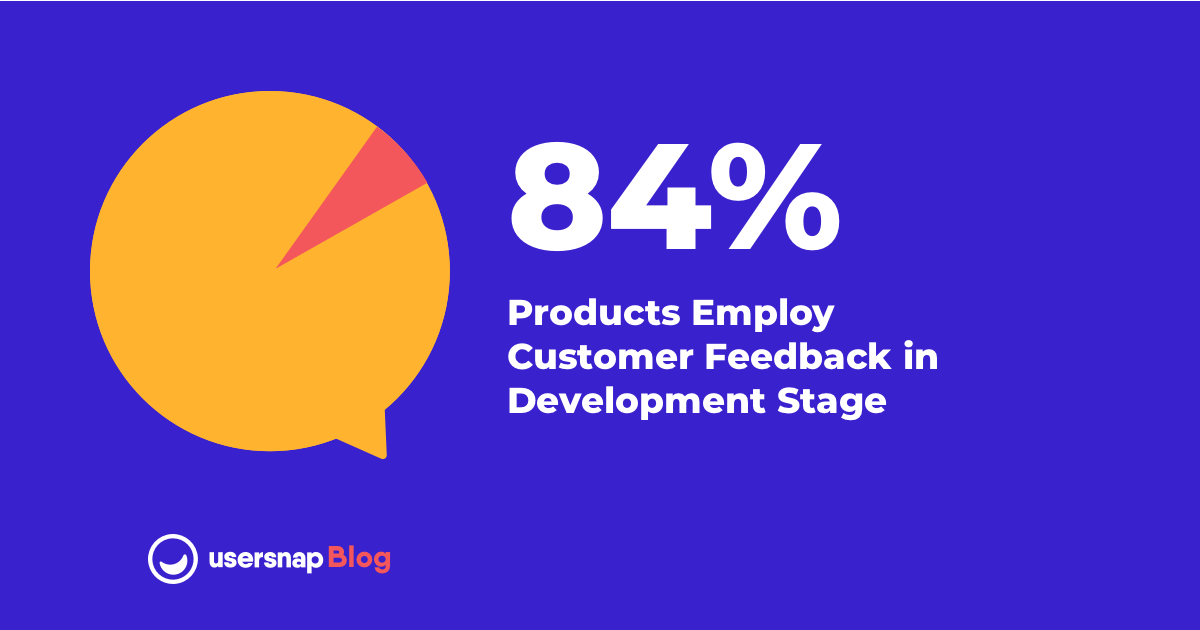
Image source: Usersnap
Here are some crucial advantages of collecting product feedback for optimizing your product roadmap.
Understanding customers' demands
If you collect product feedback, you can better understand what customers want and need from your business. It can help you improve your offerings and make them more suitable for your customers.
Identifying product deficiencies
Product feedback can also help you pinpoint problems or shortcomings with your products. It can be precious information you can use to make progress and ensure your products meet the highest quality standards.
Enhancing customer satisfaction
Adjustments based on customer feedback can lead to higher customer satisfaction and stronger customer relationships. It can translate to repeat business.
Increasing product loyalty
When your customers feel their feedback is being heard and acted upon, they will remain loyal to your brand. It can lead to increased sales and profitability over time.
Facilitating innovation and growth
If you collect customer feedback and refine the product, your business can stay ahead of the competition and remain innovative.
It can lead to new products and services, expanded markets, and increased revenue streams.
Reducing risk and costs
By collecting product feedback, you can reduce the risk of product failures and costly recalls by addressing potential issues early on. It can help you save resources in the long run.
These are just some reasons you shouldn't hesitate to collect product feedback from your customers and use it to grow your business.
Common challenges in collecting customer feedback

Image source: Freepik
Let's look at some common challenges you might face when collecting product feedback and how to overcome them.
Low response rates
When customers don't provide feedback, making informed decisions about product improvements can be difficult.
You can offer incentives such as discounts to motivate users and increase response rates.
You can also improve product feedback surveys by making them shorter, more engaging, and easier to complete to boost customer engagement.
Biased feedback
It occurs when customers only provide feedback that aligns with their personal preferences or experiences, leading to inaccurate data and poor decision-making.
To avoid this, you should use a variety of feedback channels to gather solicited feedback from a diverse range of customers.
You can also use anonymous product feedback tools to encourage honest feedback and data analysis tools to identify and eliminate nonobjective feedback.
Inadequate feedback quality
It happens when customers provide feedback that needs to be more precise or actionable, making it difficult to pinpoint areas for improvement.
To overcome this, you can provide specific questions and prompts to encourage detailed input and identify patterns in customer responses.
Lack of actionable insights
Even with high-quality feedback, you may struggle to take action.
To overcome this, you can use feedback analysis tools like FullSession to identify customer feedback trends, prioritize responses, and implement changes in your product strategy.
Limited feedback channels
If you use only one feedback channel, you may miss out on responses from customers who prefer using other channels for communication with your brand.
To overcome this, you can collect feedback by email, social media, website forms and in-person interviews and use product feedback tools to identify the most effective channels for customer segments.
Insufficient resources and expertise
Collecting feedback takes time and resources, and it can be tricky if you are short on personnel or technology.
You might overlook important feedback or not address it promptly, leading to customer dissatisfaction.
Assess your available resources and find ways to optimize them. You might consider investing in product analytics tools or outsourcing workload to third-party providers.
It helps you ensure that every piece of feedback is given the attention it deserves without overburdening your team.
Difficulty in managing large volumes of feedback data
As more and more people start providing feedback, it can become quite challenging to manage data and analyze it correctly.
It's easy for important feedback to get lost in the shuffle or go unaddressed if you don't track everything effectively.
Advanced customer feedback tools like FullSession can automatically collect, manage and analyze product feedback. We provide detailed visual reports you can evaluate and share with your team members to drive product improvements.
Start a free trial or get a demo.
10 types of product feedback you should keep in mind

Image source: Freepik
As someone creating a product, you know feedback is essential, but did you know there are different types of feedback you should be looking for?
Here are ten types of product feedback you should keep in mind.
- User experience feedback: This feedback focuses on the overall experience of using your product, including ease of use, intuitiveness, and design.
- Feature requests and suggestions: It gives you insight into what users want to see in your product and what features they feel are missing.
- Bug reports and technical issues: It is crucial for identifying and fixing technical problems or bugs impacting the user experience.
- Performance and speed feedback: This feedback relates to the speed and performance of your product, including how quickly it loads and how responsive it is.
- Pricing and value feedback: You can get insight into whether users feel your product is priced appropriately and whether they believe it provides good value for the money.
- Competitive analysis feedback: It helps you understand how your product compares to similar products.
- Customer service feedback: It relates to the quality of customer support and services your team provides.
- Brand perception and reputation feedback: You can get insight into how users perceive your brand and whether it positively or negatively impacts their decision to use your product.
- Product strategy and roadmap feedback: This feedback helps you understand how users feel about your product's current direction and what they want to see in the future.
- Market trends and demands feedback: It relates to broader market trends and demands, including what users are looking for in a product like yours and what changes may be on the horizon.
By gathering these ten types of feedback, you can better comprehend your product's strengths and weaknesses and make the required improvements to ensure your users are happy and satisfied.
10 ways to collect product feedback

Image sources: Freepik
If you're looking to collect feedback on your product, there are plenty of ways to do so.
Here are ten options to consider.
- Customer surveys: You can use survey tools to create and distribute surveys to your customers in a structured and quantitative way.
- Focus groups: Bringing together customers to discuss their experiences and opinions of your product can provide qualitative feedback.
- Social media monitoring: You can monitor social media mentions and comments for unsolicited feedback from customers.
- User testing and analytics: Tools like FullSession can provide valuable data and insights into how users interact with your product.
- Feedback forms and comment sections: Including feedback forms or comment sections on your website or app allows users to provide feedback directly to you.
- Online reviews and ratings: Review sites are excellent sources of feedback from customers, and you should implement them in your product feedback strategy.
- Email and phone support interactions: Customer support interactions can provide valuable feedback on user experience and product features.
- In-app feedback and prompts: These tools allow users to provide feedback directly within your app, making sharing their opinion more convenient and engaging.
- Sales and CRM data: Sales and CRM data can provide valuable insights into customer behavior and preferences.
- Competitive research and benchmarking: Researching your competitors can help you understand what features and experiences users seek and how your product stacks up.
Using one or a combination of these methods, you can gather valuable feedback and insights to improve your product and better serve your customers.
How to gather and analyze product feedback with FullSession
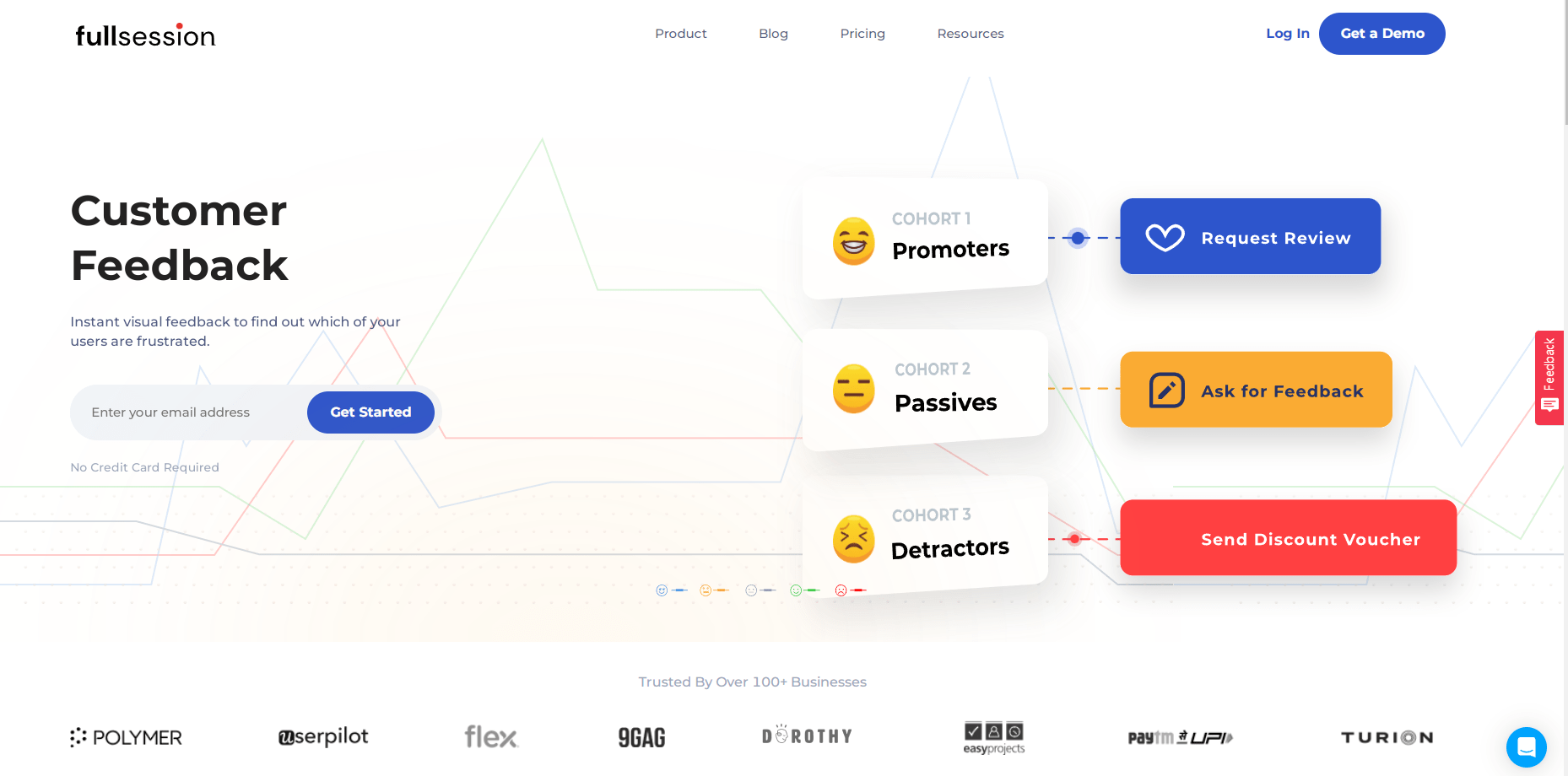
FullSession is our website visitor tracking platform that provides you with user behavior tools such as:
- Session recording and replay tools
- Customer feedback report
- NPS software
- CRO tools
- Customer churn analysis
- Interactive heatmaps
FullSession simplifies the complex process of gathering product feedback by automatically capturing and storing customers' responses.
With FullSession, you can quickly create and customize a website form according to your needs and place it in a visible area of your website to attract users' attention.
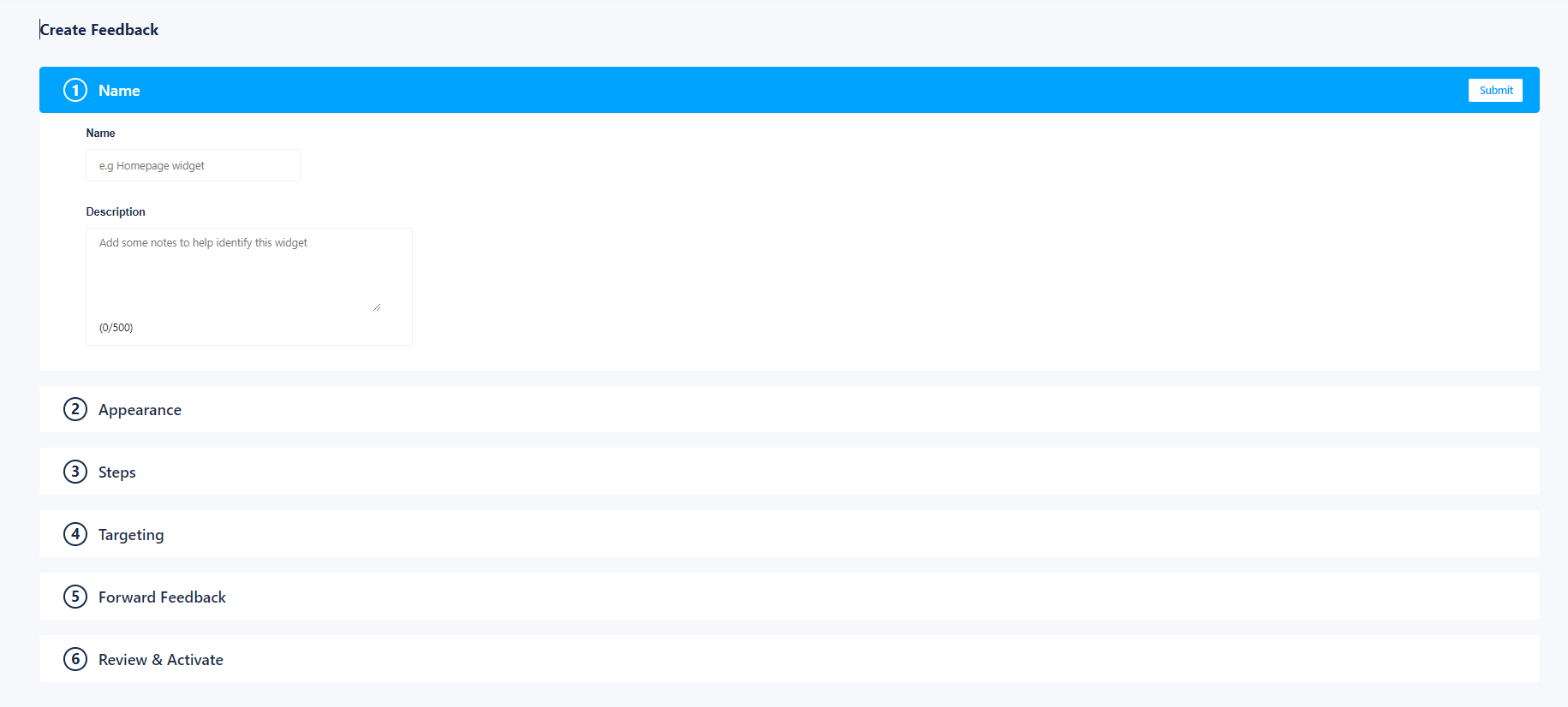
Users can add positive feedback and negative feedback using emojis and leave additional information you can use to address customer challenges.
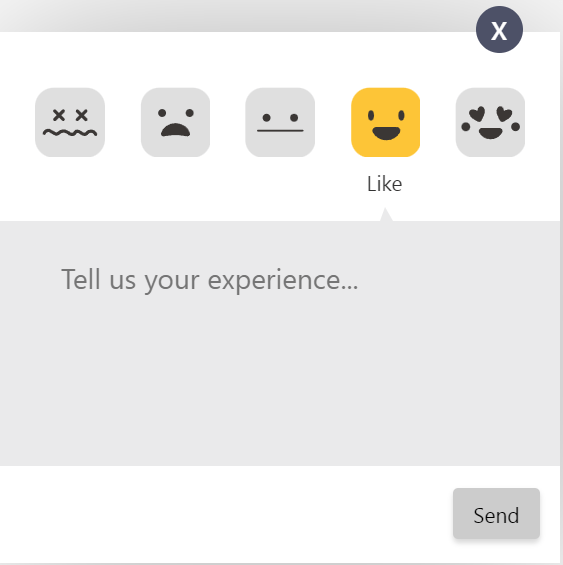
Our software then collects all data in one centralized location and allows you to swiftly address negative experiences, ensuring that you can promptly resolve any issues as they arise.
You can see the feedback ID, visited URL, user's sentiment, comment, browser and date of the feedback.

With our session recording and replay, you can watch what users did during their session and understand their negative feedback. You can see response, session and user details.
It helps you pinpoint and fix the issue quickly, improving customer experience.
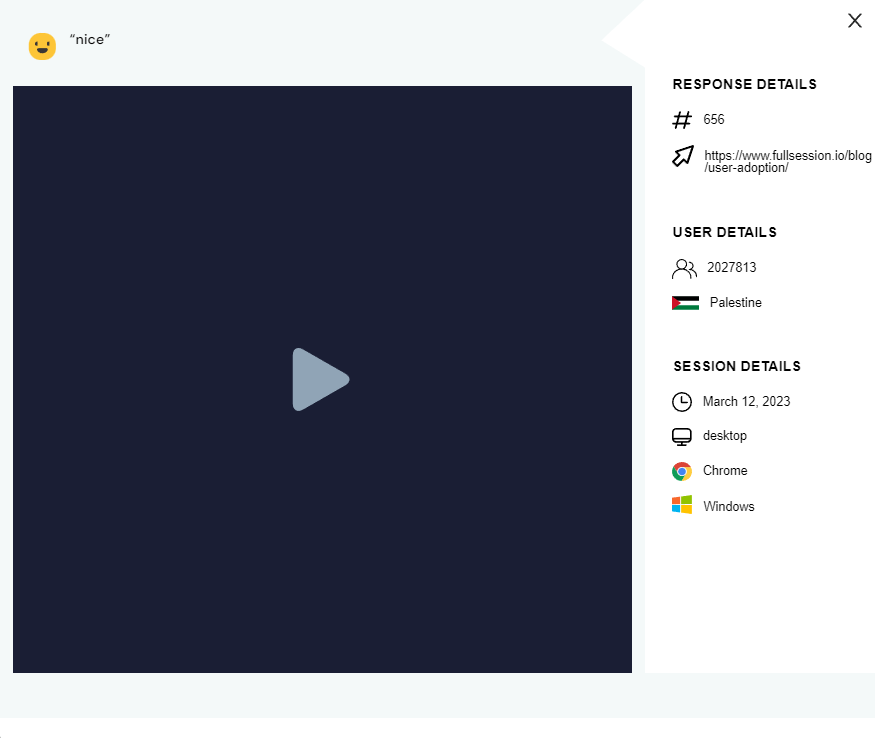
With FullSession, you can access customer feedback reports. You can see your overall score and customer sentiments and filter all data by the specific page or period you are interested in.
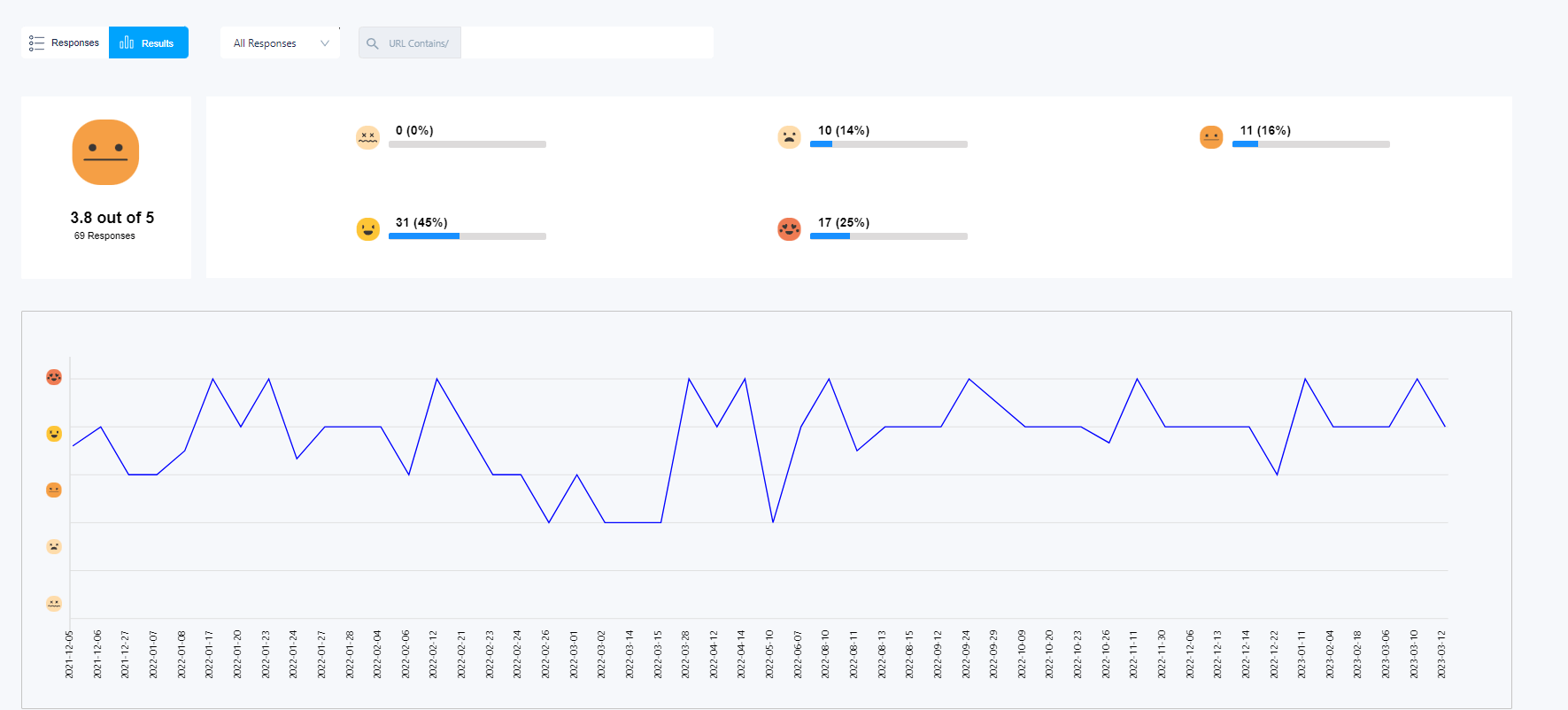
With FullSession, the guesswork is out of the picture. You can finally get customer feedback in minutes and understand what they really think about your product.
You can create your in-app survey with our no-code builder quickly and efficiently, target your feedback based on devices or specific pages, measure user sentiment and map feedback with session recordings.
All you need to do is start your free trial.
Best practices for using customer feedback for product improvement

Image source: Freepik
Collecting customer feedback is the beginning of a journey to improve your development. Here are ten best practices to make the most out of your product feedback.
- Listen and respond promptly to customer feedback
- Prioritize feedback based on impact and feasibility
- Involve key stakeholders in the feedback process
- Use feedback to guide product roadmap and strategy
- Test and iterate based on feedback until you find the best solution
- Communicate changes and updates to users through release notes, in-app notifications, and email newsletters
- Continuously monitor and evaluate feedback programs to ensure they meet your needs and produce valuable insights
- Use feedback to build stronger relationships with customers
- Prioritize feedback and make it a crucial part of your product development process
- Leverage feedback to drive innovation and growth
By following these best practices, you can maximize customer feedback, deliver a product that meets your users' needs and expectations and close the product feedback loop.
Product feedback: Final words
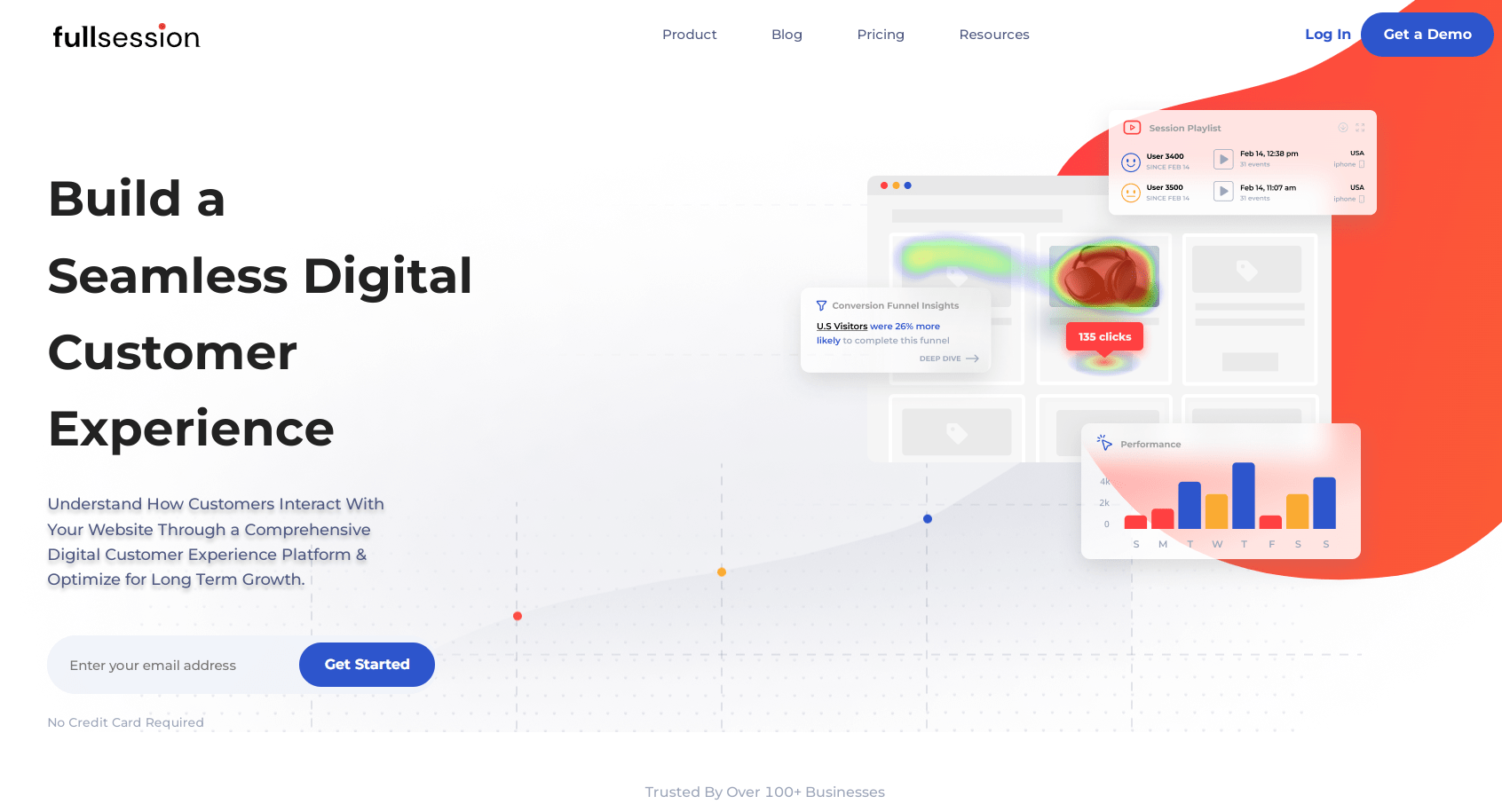
Collecting and using customer feedback is essential for improving your product and staying competitive in today's market.
By listening to your customers and understanding their needs and pain points, you can turn feedback into a strategic advantage for your business.
With FullSession, you're not just fixing problems or addressing complaints.
You also have an opportunity to discover new ideas, improve user experiences, and turn product feedback into a powerful tool for innovation and growth.
So, why wait?
Start a free trial or get a demo.